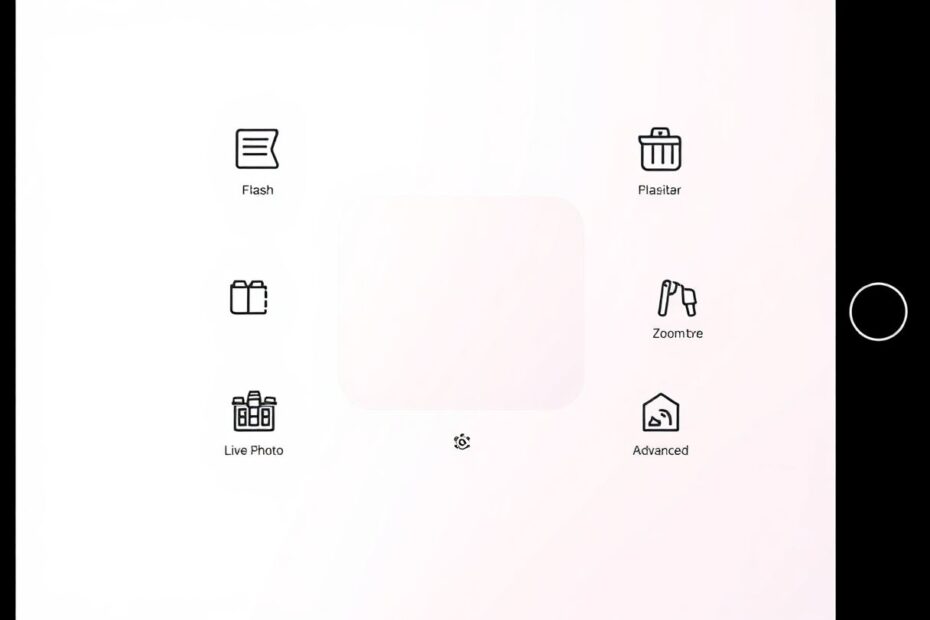Introduction
The iPhone camera has revolutionized mobile photography, putting powerful imaging capabilities in the hands of millions. However, the array of symbols and icons in the Camera app can be bewildering for many users. This comprehensive guide aims to demystify every symbol in the iPhone Camera app, explaining their functions and providing tips for leveraging these features to capture stunning photos and videos.
The Main Camera Interface: Decoding the Basics
When you launch the iPhone Camera app, you're greeted with a clean, minimalist interface designed for quick access to essential functions. At the top left, you'll find the Flash icon, a lightning bolt symbol that cycles through three states: Auto (A), On, and Off. Understanding these options is crucial for managing light in various shooting conditions.
Adjacent to the Flash icon is the Live Photo symbol, a concentric circle icon that enables or disables the Live Photo feature. Introduced with the iPhone 6s, Live Photos capture 1.5 seconds of video before and after the still image, bringing your memories to life with motion and sound.
The zoom level indicator, typically displayed as 0.5x, 1x, or 2x (depending on your iPhone model), sits above the shutter button. This feature harnesses the multiple lenses on modern iPhones, allowing for optical zoom without loss of image quality. The 0.5x ultra-wide lens, introduced with the iPhone 11 Pro, captures a 120-degree field of view, perfect for landscapes or large group shots.
Advanced Controls: Unleashing Your Inner Photographer
Tapping the caret icon (^) at the top of the screen reveals a treasure trove of advanced controls. Here, you can fine-tune your camera settings to achieve professional-quality results. The Photographic Styles feature, available on iPhone 13 and later models, offers presets like Rich Contrast, Vibrant, Warm, and Cool. Unlike simple filters, these styles use computational photography to adjust tone and warmth while preserving skin tones and other important elements.
The Aspect Ratio control allows switching between 4:3 (standard), 16:9 (widescreen), and 1:1 (square) formats. This flexibility is particularly useful for content creators who need to tailor their images for different social media platforms or print formats.
Night Mode: Illuminating the Darkness
Night mode, signified by a crescent moon icon, is a game-changer for low-light photography. Available on iPhone 11 and later models, this feature uses advanced algorithms and the A13 Bionic chip (or later) to capture stunning images in near-darkness. When activated, Night mode displays the exposure time, typically ranging from 1 to 30 seconds. For optimal results, use a tripod and experiment with longer exposure times to capture more light and detail in challenging conditions.
Video Mode: From Amateur to Auteur
Switching to Video mode reveals a host of specialized symbols and controls. The Action Mode icon, represented by a running figure, enables ultra-stabilization for smooth footage even when the camera or subject is in motion. This feature, introduced with the iPhone 14 Pro, uses the full sensor with advanced roll correction to deliver gimbal-like stabilization.
The resolution and frame rate indicator (e.g., 4K 60) displays your current video quality settings. Modern iPhones can capture up to 4K resolution at 60 frames per second, rivaling many professional cameras. This high-quality footage, combined with features like Dolby Vision HDR (available on iPhone 12 and later), allows for cinematic-quality video capture in the palm of your hand.
Cinematic Mode: Hollywood in Your Pocket
Cinematic mode, introduced with the iPhone 13, brings professional-grade depth-of-field effects and focus transitions to video. The "F" icon in this mode allows you to adjust the simulated aperture, controlling the amount of background blur. This feature uses advanced machine learning to analyze the scene, automatically shifting focus to the most important subject and allowing for impressive rack focus effects previously only achievable with expensive cinema cameras.
Portrait Mode: Studio-Quality Portraits Anywhere
Portrait mode isn't just for human subjects; it works beautifully on pets and objects as well. The various lighting effects in this mode – Natural Light, Studio Light, Contour Light, Stage Light, Stage Light Mono, and High-Key Light Mono – simulate different studio lighting setups. These effects utilize the TrueDepth camera system on newer iPhones, creating a depth map of the scene to separate the subject from the background and apply realistic lighting effects.
Panorama Mode: Capturing the Big Picture
Panorama mode allows users to create ultra-wide shots by panning the camera across a scene. The arrow and level guide help ensure smooth, level pans for seamless panoramas. This mode uses computational photography to stitch together multiple images in real-time, creating expansive photos that can capture up to 240 degrees of view.
Customizing Your Camera Experience
Delving into the Camera settings in the iOS Settings app reveals a wealth of customization options. Here, users can enable features like Preserve Settings to maintain their preferred camera mode between sessions, activate grid lines for improved composition using the rule of thirds, and choose between space-saving HEIF and universally compatible JPEG formats for photos.
Conclusion: Mastering the Art of iPhone Photography
Understanding the symbols and features of the iPhone Camera app is just the beginning of your journey into mobile photography. The true power of these tools lies in how you apply them creatively to capture the world around you. With practice and experimentation, you can leverage the advanced computational photography capabilities of the iPhone to produce images that rival those from dedicated cameras.
As smartphone camera technology continues to evolve, staying informed about new features and updates will help you make the most of your device. Whether you're a casual shooter or an aspiring professional, the iPhone camera offers a versatile platform for exploring your photographic vision. By mastering these tools, you're well-equipped to capture life's moments with unprecedented quality and creativity.
